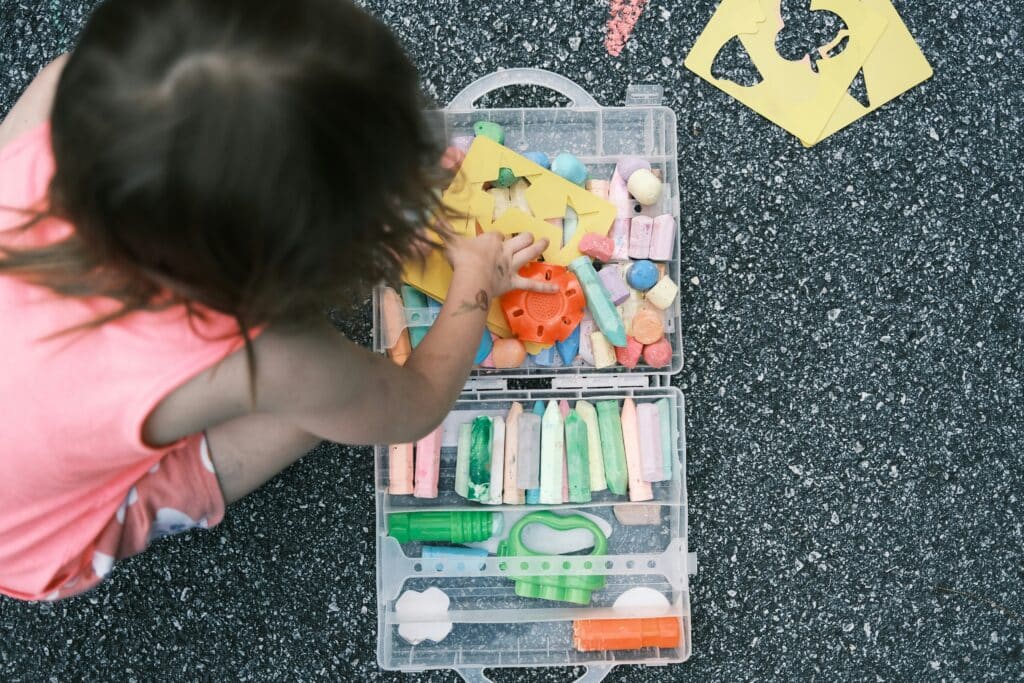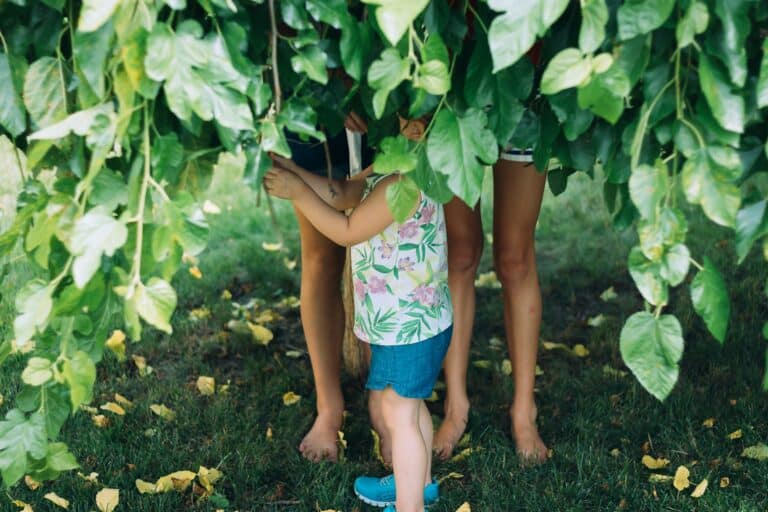So, where better to start fostering a change than with our future generations? Today’s article, dear reader, will serve as a comprehensive guide to introduce your children to an eco-friendly lifestyle. 🌱

Teaching our kids the significance of sustainable living is critical, and this comprehensive guide will serve as a beacon for beginners embarking on the journey towards an eco-friendly household. We’ll delve into the fundamental principles of living a low-waste lifestyle and equip you with the essentials to help your kids adopt this important mindset.
This article will gradually unfurl the concept of eco-friendly living, drawing on insights and practices from environmental experts, as well as real-life experiences from parents who have successfully transitioned to a low-waste lifestyle. Moreover, we will also provide you with practical strategies and tips that can be seamlessly incorporated into your everyday routines. 🌍
Anticipating the Journey
Like any meaningful change, adopting a low-waste lifestyle does not happen overnight. It requires patience, dedication, and most importantly, a thorough understanding of the ‘why’ behind our actions. We will thus start by illuminating the reasons behind the need for a more sustainable lifestyle and the long-term benefits it offers for our children, our communities, and our planet.
Essentials of Low-Waste Living
After setting the stage with the ‘why’, we will dig deep into the ‘how’. We will explore how to gradually incorporate low-waste essentials into your children’s lives, taking one step at a time. This includes sustainable choices in areas like food, toys, clothing, hygiene, and even leisure activities. 💼
Challenges and Solutions
Our journey towards an eco-friendly lifestyle is not without its challenges. From picky eaters refusing to try plant-based meals to the allure of flashy plastic toys, we’ve got you covered. We’ll discuss these hurdles and offer you tested solutions to tackle them effectively.
Building an Eco-Friendly Mindset
Above all, this guide aims to go beyond mere material changes. Our aim is to nurture an eco-friendly mindset in our children, to make them conscious of their choices, their impact, and the difference they can make. 🌟
So, are you ready to embark on this green journey with your little ones? We promise it’s going to be an enriching, eye-opening, and ultimately rewarding experience for you and your children. And remember, every little step counts. Every conscious choice is a seed sown for a greener, healthier planet for our kids and the generations to come.
In the world of low-waste living, there’s no ‘too small’ or ‘too late’. There’s only ‘let’s begin’. And with this article, we’re thrilled to help you take that first step. Let’s get started!
Understanding Eco-Friendly Kids: A Beginners’ Guide
As we all know, our planet is currently under significant environmental stress due to various human activities. Therefore, it becomes crucial to instill the value of eco-friendliness in our children’s minds from an early age. If you’re new to this concept and not sure where to start, this ultimate guide to low-waste essentials for beginners will guide you through it.
In this age of rampant consumerism, it’s more crucial than ever to raise children who are conscious of their ecological footprint. From clothes, toys, to food, our choices can have a significant impact on the environment. But fear not! This guide will walk you through the basics of eco-friendly essentials for kids and why it’s important to make these switches. It will also provide practical tips and examples to help you make this transition as smooth as possible.
Ready to get started? Let’s dive in!
The Importance of Eco-Friendly Essentials for Kids
Before we delve into the specifics, it’s essential to understand why eco-friendly products are crucial for kids. For starters, children’s products often come with a high environmental cost due to their short usage span. Consider how quickly kids outgrow clothes or lose interest in toys. These items, often made from non-renewable resources, end up in landfills, contributing to environmental pollution. By opting for eco-friendly alternatives, we can significantly reduce this waste.
Moreover, many conventional children’s products contain harmful chemicals that can adversely affect a child’s health. On the other hand, eco-friendly products are typically made from natural, non-toxic materials, making them safer for children. They also promote sustainability, teaching children about the importance of preserving the environment from an early age.
In addition to these, using eco-friendly essentials for kids can also lead to significant cost savings in the long run. While they might seem more expensive initially, their longevity and durability often make them a more economical choice.
The Transition to Eco-Friendly Essentials: Where to Start?
Transitioning to eco-friendly essentials for kids doesn’t have to be overwhelming. The key is to start small and gradually make changes. Here are some areas where you can start:
Clothing
When it comes to children’s clothing, consider buying second-hand or opting for brands that use sustainable materials. Not only are these options more environmentally friendly, but they’re often more durable as well. Plus, you can also consider a clothing swap with friends or family with kids of different ages.
Toys
Plastic toys are a significant source of environmental pollution. Consider opting for toys made from natural materials like wood or organic cotton. These toys are not only safer for children but also biodegradable, reducing their environmental impact.
Food
Introducing your children to organic, locally sourced food from an early age can significantly reduce their carbon footprint. Plus, it’s a great way to teach them about healthy eating habits.
Top Eco-Friendly Products for Kids
Now that you have a better understanding of why and where to start, let’s take a look at some top eco-friendly products for beginners:
1. Green Toys
Green Toys is a company that produces toys entirely out of recycled plastic milk jugs. Not only are these toys safe and durable, but they also come in recyclable packaging, making them a great eco-friendly option. Check out this fun video from “Green Toys” on YouTube for more insights.
2. Frugi
Frugi is a children’s clothing brand known for its commitment to sustainability. They offer a wide range of clothing made from organic cotton, promoting both comfort and eco-friendliness. Their colorful and playful designs are a hit with kids, making this brand a great place to start your eco-friendly journey.
3. Lifefactory
Lifefactory offers glass baby bottles encased in a silicone sleeve, making them both durable and eco-friendly. These bottles are free from harmful chemicals like BPA, phthalates, and PVC, ensuring your child’s safety.
Comparing Eco-Friendly Brands: A Quick Guide
With numerous brands claiming to be eco-friendly, it can be challenging to know which ones to trust. Here’s a quick comparison table to help you decide:
| Brand | Eco-Friendly Practices |
|---|---|
| Green Toys | Made from 100% recycled materials and come in recyclable packaging |
| Frugi | Uses organic cotton and supports ethical manufacturing |
| Lifefactory | Offers glass baby bottles free from harmful chemicals |
Remember, the journey to eco-friendliness is a marathon, not a sprint. It’s okay to make changes gradually. The most important thing is to be consistent and committed. Your efforts today will help ensure a brighter, more sustainable future for your children. So why wait? Start your eco-friendly journey today!
Conclusion
In conclusion, we have journeyed through an in-depth analysis of the fascinating world of Information Technology (IT) and Engineering, underlining their relevance and importance in the modern world. We have broken down complex concepts and theories into digestible pieces of information, while simultaneously enhancing your understanding of the topic.
From exploring the foundations of software engineering, detailing its processes, methods, and tools, to elucidating on the essential role IT plays in our daily lives, this article has been a treasure trove of valuable insights.
Moreover, we have also delved into the intricate dynamics between IT and engineering, the synergy that exists between these two fields, and how they work hand-in-hand to drive innovation and progress in today’s digital age.
Recall our discussion on how software engineering principles guide the development and maintenance of software systems, making them reliable, efficient, and adaptable to changing circumstances.
We also highlighted how IT is the backbone of virtually all sectors, enabling automation, enhancing communication, improving efficiency, and driving innovation.
Remember, all these concepts and theories are not merely abstract ideas confined to the realm of academia; they are practical tools that can be applied in your daily life, career, or business.
So, whether you are a seasoned IT professional or an engineering enthusiast, remember, the knowledge you have gained from this article is invaluable. Apply it, share it, and let it guide you in your journey of continuous learning and growth.
💡Your thoughts and insights matter! Feel free to leave a comment, share your thoughts, or even pose a question. Let’s make this a platform for intellectual discourse, a place where we can learn from each other and grow together. 🙌
For those interested in further research, I recommend visiting the following websites: [MIT OpenCourseWare](https://ocw.mit.edu/courses/electrical-engineering-and-computer-science/) and [Stanford Engineering Everywhere](https://see.stanford.edu/Course). These platforms offer a wealth of resources on IT and engineering. Remember, knowledge is power, and the journey of learning never ends.
As Albert Einstein once said, “The more I learn, the more I realize how much I don’t know.” Let’s continue this journey of discovery together. 🚀
Thank you for taking the time to read this article. I hope it has been as enlightening for you as it has been for me writing it.
Until next time, stay curious, keep learning, and never stop innovating. After all, the future belongs to those who believe in the beauty of their dreams. 🌟
References:
1. [IEEE Computer Society](https://www.computer.org/)
2. [Association for Computing Machinery (ACM)](https://www.acm.org/)
3. [Institute of Electrical and Electronics Engineers (IEEE)](https://www.ieee.org/)
4. [Computer Science & Engineering – MIT OpenCourseWare](https://ocw.mit.edu/courses/electrical-engineering-and-computer-science/)
5. [Stanford Engineering Everywhere](https://see.stanford.edu/Course)


